After a long, long wait we can finally return to Faerûn in Larian Studio’s Baldur’s Gate 3. The game launched on 3rd August 2023 and by metrics on the concurrent players on Steam, Larian has a monster hit on their hands. The evening of its launch it saw a ridiculous 471 897 concurrent players making it one of the most popular games on the platform ever.
So many Steam players jumped in that the platform had problems with stability and was down for some users on launch night, according to GameRant.
Hypertext has received a review code for Baldur’s Gate 3 and while we are busy with the review, we wanted to add to the conversation in some way, especially as we’re Baldur’s Gate veterans with a combined 300 hours in the previous two games – which is minuscule compared to some members of the BG community who live and breath THAC0.
But this still gives us some insight, and to help out newcomers to the series here is a quick and simple guide on how to build the best wizard to start Baldur’s Gate 3:
This build will be aimed at playing on the Tactician difficulty where choices in build mean the difference between life and death. First, let’s start with which race to pick.
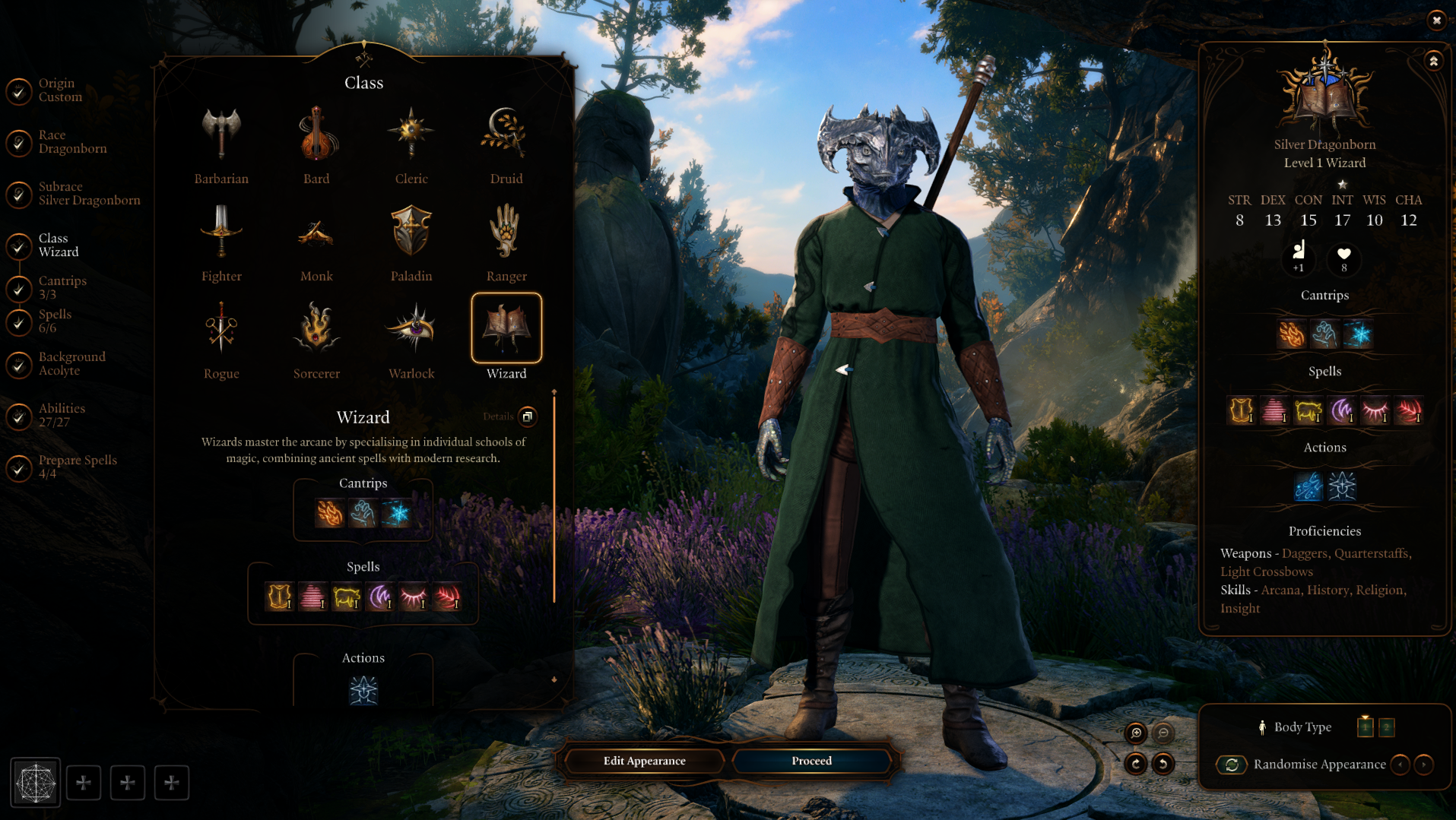
In Baldur’s Gate 3, there are a huge amount of races to choose from, but we think that the best starting bonus for a wizard goes to either the Elf, with High Elf sub-race, Dragonborn, and the Half Elf, with either the Drow or High Elf sub-race.
The difference here is on the bonus spells you get from immediately choosing one of these races. Dragonborn get breath spells based on what sub-race you pick. For example, Red Dragonborn get Fire Breath which does 2D6 Fire Damage, while White Dragonborn get Frost Breath which does 2D6 Cold Damage.
High Elves get to choose one extra cantrip as their subrace bonus, which also applies to High Half Elves and we’re not talking weed from the Shire.
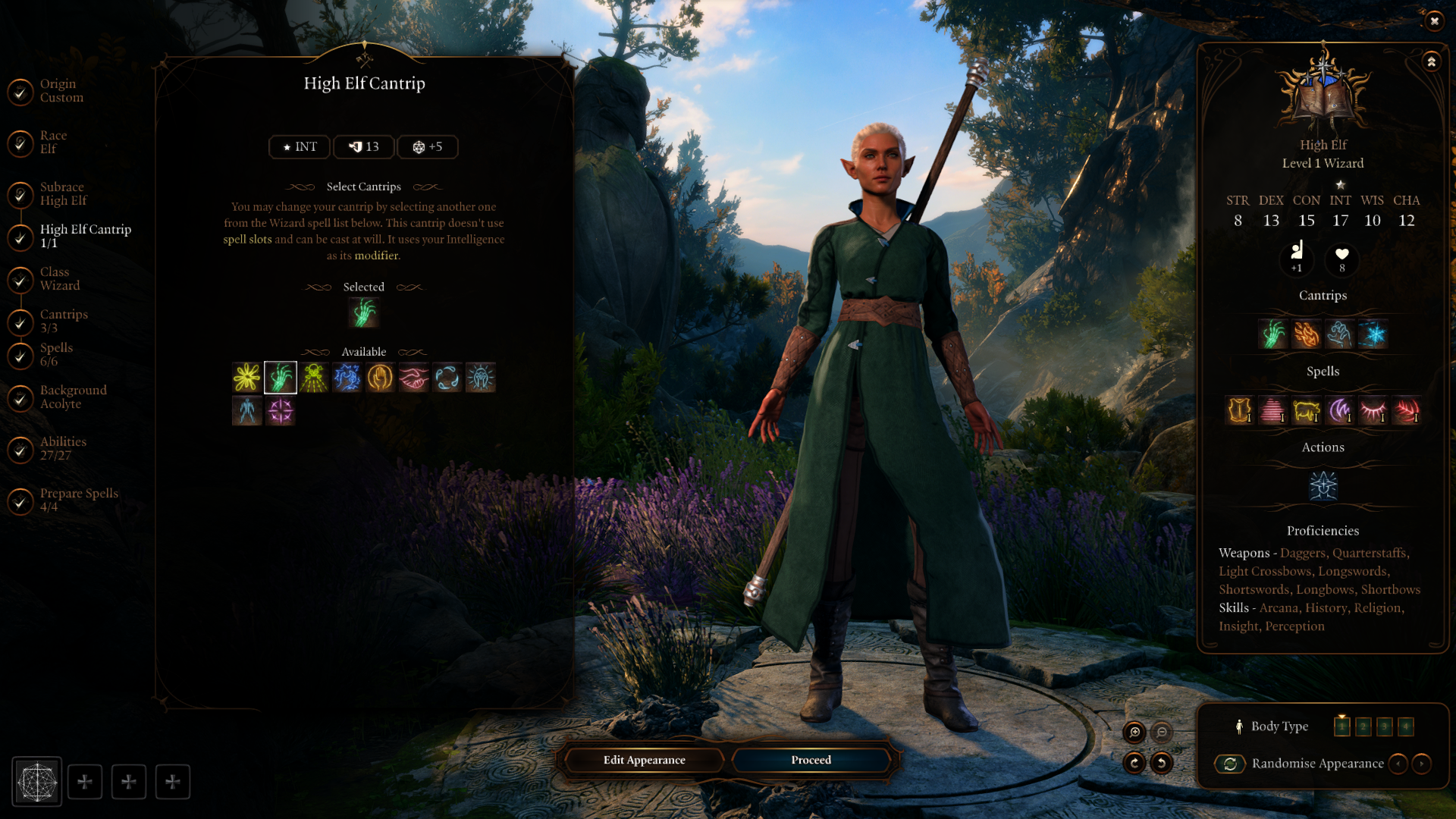
You get a set of Spell Level 1 cantrips to choose from. Cantrips are different from Spells because they can be done each and every turn whenever you want while Spells require to use spell slots.
There are a few cantrips to choose from. Minor Illusion is a situational way to distract some enemies, while Friends unlocks new ways to interact with NPCs, for example, to gain entrance to a castle by making the guards like you.
However we think here the best bet will be choosing damaging cantrips for that extra edge in combat. For this, we recommend either Poison Spray or Bone Chill.
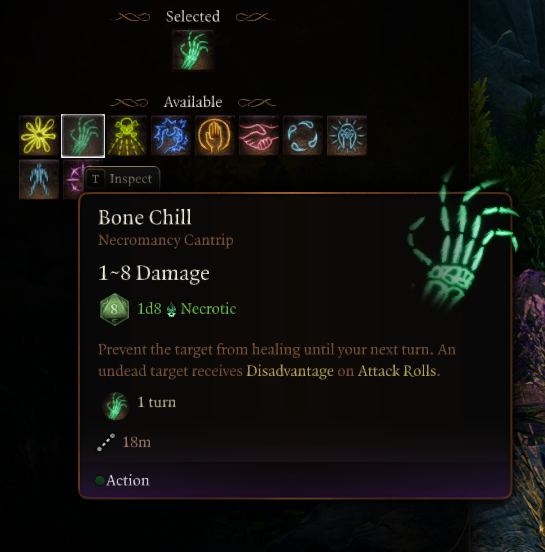
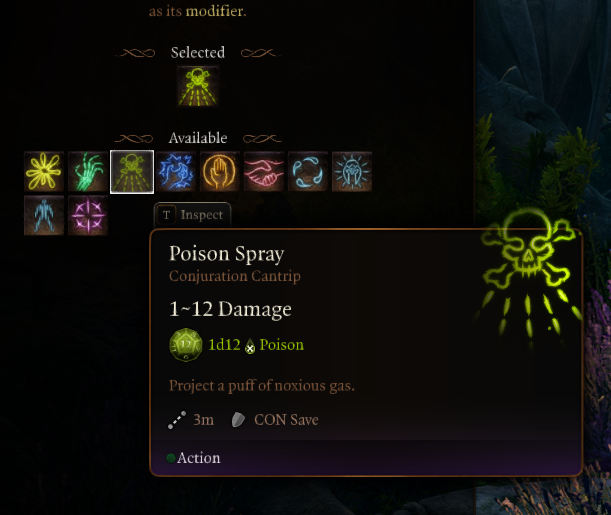
We’re leaning towards Bone Chill as it prevents enemies to heal until their next turn and it gives a disadvantage to undead enemies on their next attack roll. However, it can only be cast once per turn and only affects one enemy unlike Poison Spray which is an area of affect spell. But we get to choose three more cantrips just now so let’s stick with Bone Chill.
Next up is choosing your starting Wizard cantrips which all races get in Baldur’s Gate 3. Here we recommended Friends, Ray of Frost which slows down enemy movement speed and finally Poison Spray as we have discussed above.
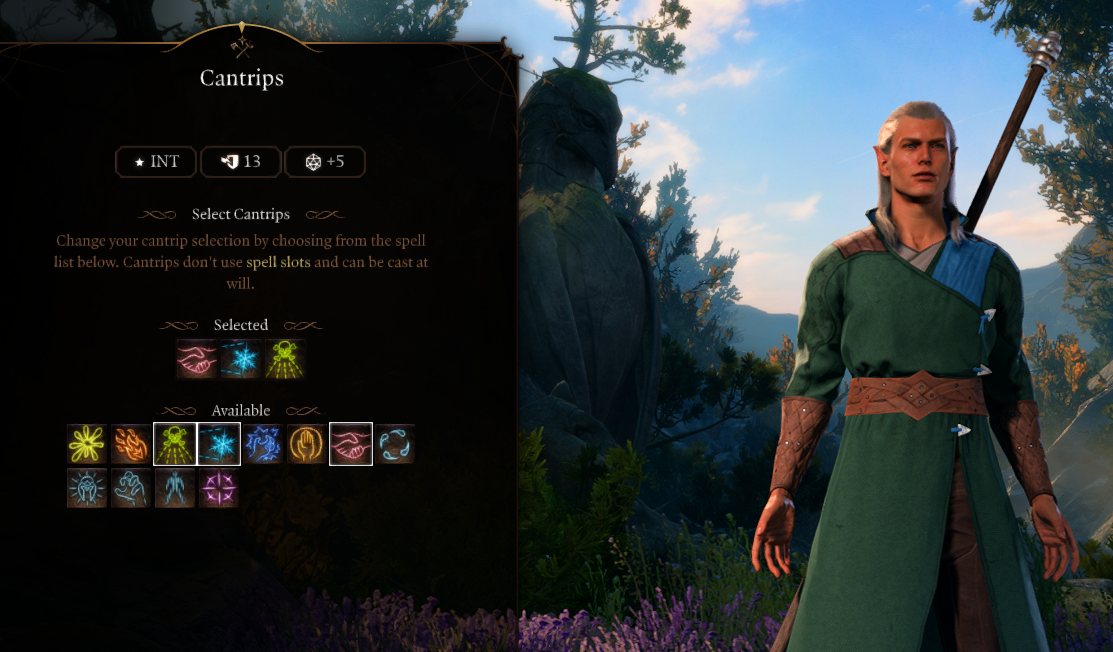
Next we get to the meat and potatoes in choosing your starting Wizard Spells. There are some classics here from the previous two games, like Find Familiar which will give your character what is basically a pet creature of your choosing which will travel with you. There are also some new entries from recent editions of Dungeons and Dragons, like Tasha’s Hideous Laughter which will incapacite enemies with laughter for ten turns.

We decided on a combo of classics and new spells. Magic Missiles is the first most obvious choice. No good Wizard can ever be caught without it. Think less of it as a spell and more as a bazooka which can fire three or more rockets at once. It will be your main damage dealer and you will get to see enemies melt as you can target different enemies with different missiles, or focus all on one to just obliterate opponents.
Next up is Charm, another classic, which will turn an enemy into a friendly and will stop them from attacking you. When not in combat Charm can be used like Friends to give bonus to charisma rolls. Charm is all about crowd control and controlling the battlefield. It goes hand in hand with another choice in Sleep.
Sleep will put a number of enemies in an 18 meter range to sleep for two turns letting you do whatever you want to them. This doesn’t work on some giant monsters and the undead but living enemies but most living foes will be incapacitated. These two spells were essential in Baldur’s Gate 1 and 2, especially on higher difficulties.
Next up is Mage Armour which turns your flimsy robe-wearing nerd into a knight with an Armour Class of 13 and adds a bonus to your Dexterity. There will be two slots left fill, and now you can decide whether you want another damaging spell with Ice Knife, or Witch Bolt, or Tasha’s Hideous Laughter for further crowd control. Additionally you can go with something like Disguise Self which seems like a more roleplaying focused spell to hide your identity.
With your spells now picked you can hit your attributes, but not before choosing a background. These really depend on what kind of character you are playing but they do add a bonus to certain rolls. For example, choosing the Urchin background brings a Sleight of Hand and Stealth modifier.
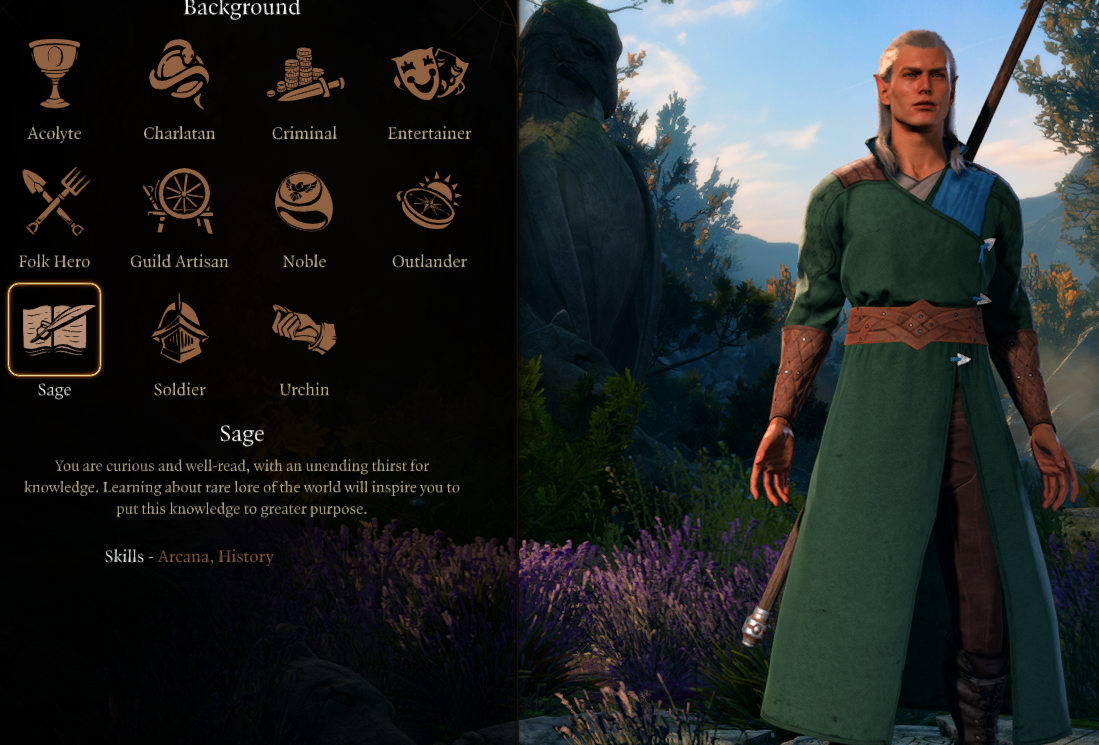
For a pure Wizard character in Baldur’s Gate 3 we recommend choosing the Sage background, which adds a roll bonus to Arcana and History. This means that any situation where something magical is happening to and around your character, they will be able to react like a Wizard should.
Ability scores are next and we recommended this min-maxy approach:
- Strength – 8,
- Dexterity – 8,
- Constitution – 16,
- Intelligence – 17,
- Wisdom – 8,
- Charisma – 15.

Intelligence is the primary stat for Wizards in Baldur’s Gate 3 and will affect all rolls that have to do with magic and spells. It will affect combat and most other interactions that have your character think. Next highest is Constitution which affects your hit point, the higher the better.
You will continue to be squishy compared to Fighters and Barbarians, but less so. Finally Charisma affects all social interactions so it stands as the third highest score. Strength is the key stat for fighters, Dexterity for thieves and rogues and Wisdom for clerics, your Wizard should not need any of these but these lower scores will affect rolls that deal with them.
So try to avoid rolls that have your Wizard need to perform massive feats of strength or feats of agility. You will flop hard.
Finally you will be able to add two points to skills that will effect rolls on Insight, Medicine, Religion and Investigation. You can only choose two of these to bolster by two points. These can be what you wish depending on your roleplaying since all fall into the arcane domain of magic in some way or another.
And that’s it! The last piece of business is choosing four spells to have prepared – this is so you can use them on your next battle. Have Magic Missile prepared, as well as Mage Armour. The rest depends on your play style. Choose another crowd control spell or another damaging spell.

The last thing to do is customise your character as you see fit, and there are so many different options available here, you can really get creative.
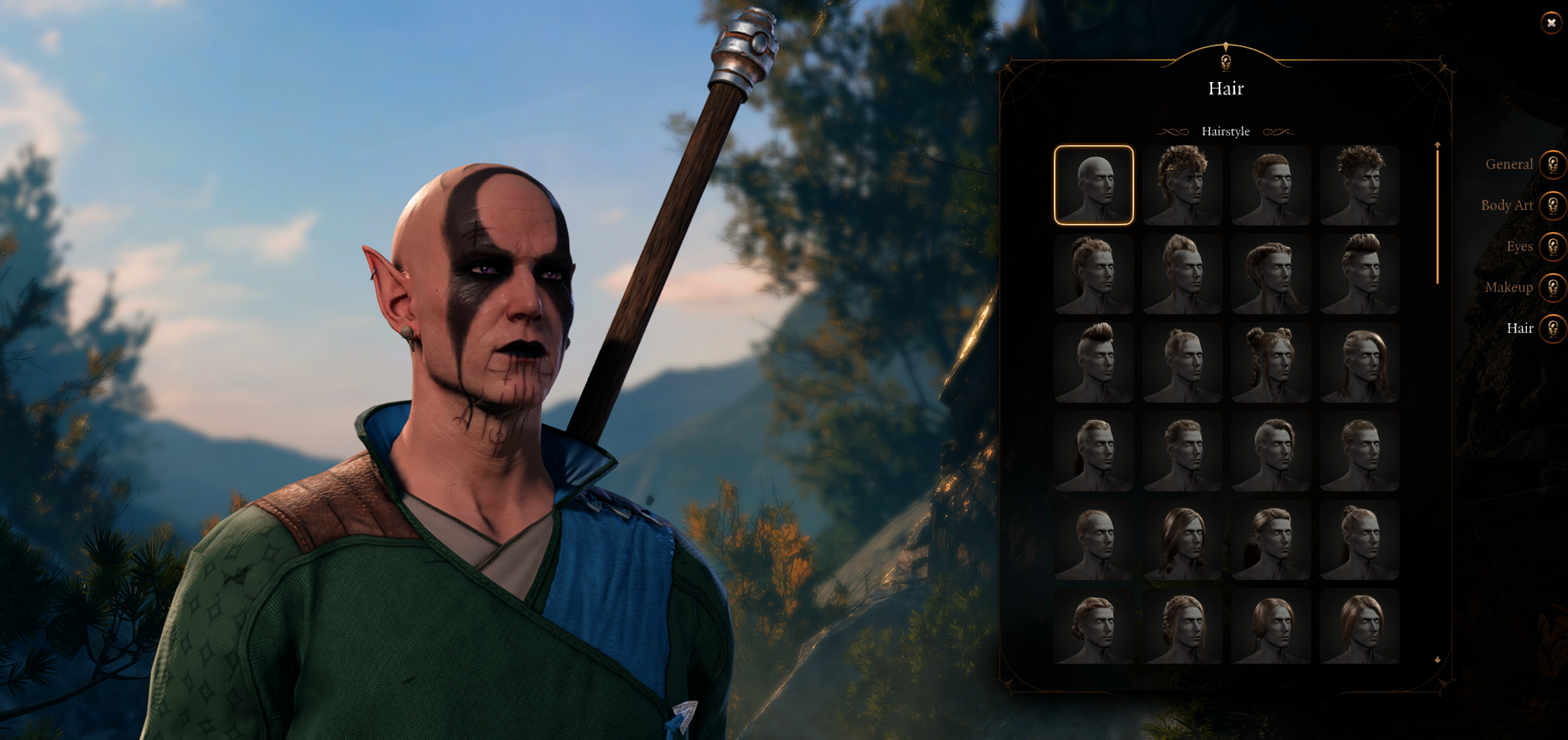
Now you are ready to take on the Illithid thread. Will you save the world, or see it consumed by weird tentacles? Either way make sure to look out for our upcoming review of the game.

